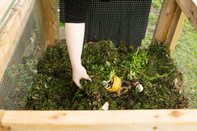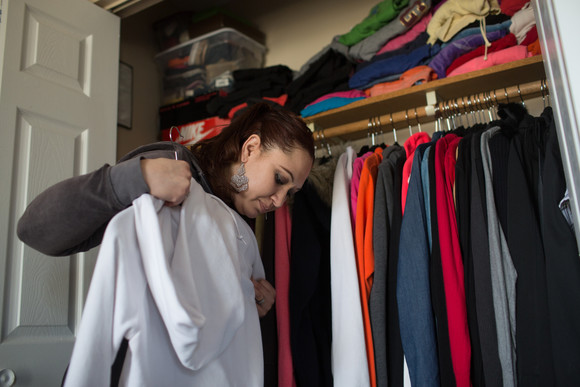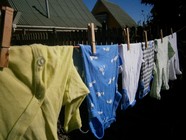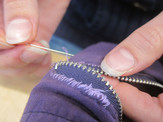Backyard composting and worm composting

Thursday, April 8 from 6 to 7 p.m.
Learn how to compost at home! This course will cover backyard composting, from setting up the bin to troubleshooting issues with your pile. We will also include a section on vermicomposting, or composting indoors with the help of worms.
RSVP on the Facebook event or by emailing your liaison.
|
April workshop: Decluttering

Learn how to declutter your home, and how to prevent clutter from accumulating in the first place. We will cover handling the emotional and physical burden of clutter, with tips and methods you can use in your home.
- Saturday, April from 10 to 11 a.m.
- Friday, April 16 from 6 to 7 p.m.
Please RSVP on the Facebook events for April 10 or April 16 or by emailing your liaison.
|
Upcoming and previous workshops
Find the full schedule of workshops on the participant webpage.
See the Zero Waste Challenge workshops YouTube playlist for recordings of past webinars.

When you started the Zero Waste Challenge, you were probably thinking about cans, bottles, and a compost pile, but not about what’s inside your closet. However, clothing is a big contributor to trash and an important aspect of your zero-waste lifestyle.
Let’s overhaul the way you think about clothes starting right now! You don’t even have to become someone who wears only vegetable-dyed, organic hemp tunics to reduce your impact (but if you do, more power to you).
Care for the clothes you already have

Washing and drying correctly can go a long way in extending the life of your family’s clothing. Some of you may recall a Home Economics class when you learned to separate lights from darks and when to use hot or cold water. If not, check out the wikiHow article on doing laundry for some good tips and make it a habit to check your tags for care instructions.
After washing, skip the hot dryer and choose to line-dry. This can help you avoid shrinking that new sweater or pair of wool socks while saving electricity in the process.
|

Next, learn some basic mending skills, like sewing on a new button, redoing a hem, or patching a hole when someone’s shirt or pants need a minor fix. Drop by a Hennepin County Fix-It Clinic for hands-on assistance, or get Martha Stewart’s tips on basic sewing skills. You can also find books on the subject at a Hennepin County library.
When your clothes are never worn or past their prime
If you’re like most people, you have clothing in your household that is never worn. Maybe your style changed, your kids grew, or your spouse changed jobs and only wears scrubs to work.
When you get into spring-cleaning mode, don’t trash them! If your clothes are in usable condition, donate them so they get another life. If they are stained, torn, or too worn for someone else to wear, consider repurposing them in other ways or using them as cleaning rags.
When it’s time to change up your wardrobe
|

The next time you want to buy something brand new, keep in mind the resources it takes to make and transport clothing. Reduce some of the impact by finding new-to-you pieces at thrift stores, clothing swaps, or local garage sales (these can be great for finding inexpensive kids’ clothes). You can even get help with a personal shopper at Arc Value Village if you’re not keen to dig through racks.
When you can’t find an item used, buy high-quality items that will last a long time rather than opting for cheap, trendy clothing. Don’t buy something simply because it’s on sale. Instead, only purchase items you truly love and will wear many times. Remember, it isn’t a deal if you never wear it!
|
Simplify your wardrobe
Although you can donate clothing when you no longer want it, the best option is to stop buying clothes you won’t wear in the first place. Secondhand stores get tons of donations and can’t sell everything anyway!
Minimalist and “capsule wardrobes” have become popular recently, and when done well they can reduce waste while saving you time and money. The basic concept is to reduce your wardrobe to fewer versatile clothing pieces that you can mix and match, let go of the clothes you need “just in case…” and shop less frequently and more intentionally (buy only clothes that you love and that fit your body and your lifestyle). You can find endless tutorials and tips online.
Most people won’t adopt all of these changes at once because it can be a big undertaking. But, if you work on one aspect at a time, you can learn to slowly curate your lower-waste wardrobe and reduce your environmental impact.
See the laundry room section of the Zero Waste Guide for more tips on reducing waste in that area of your home.
|